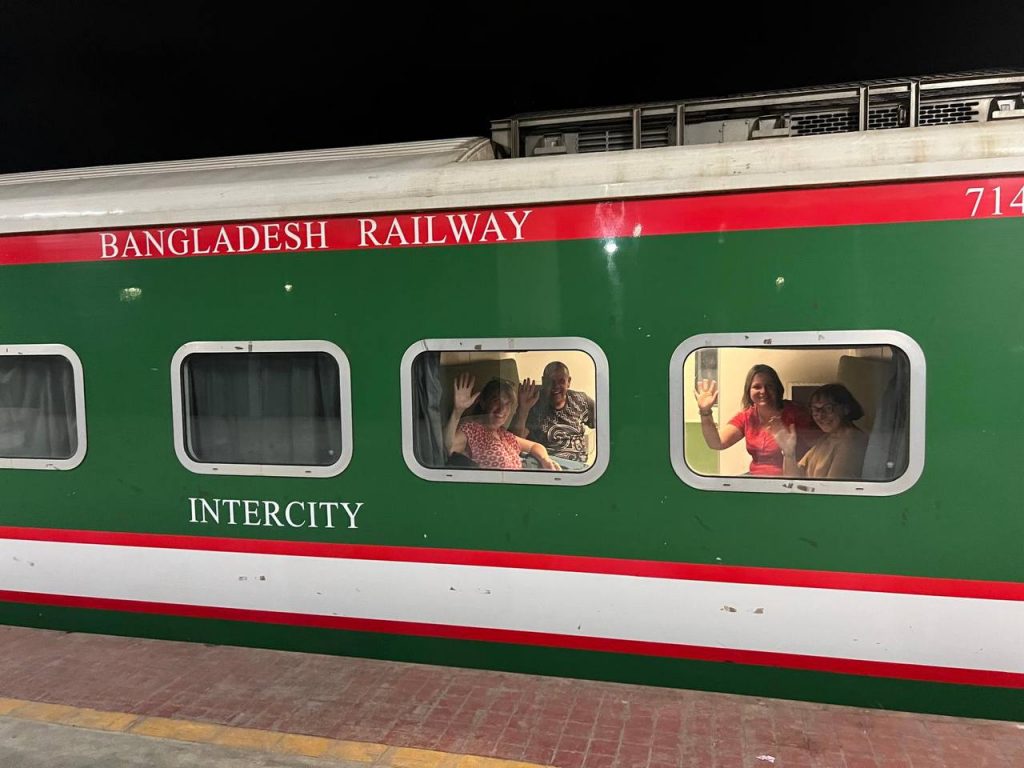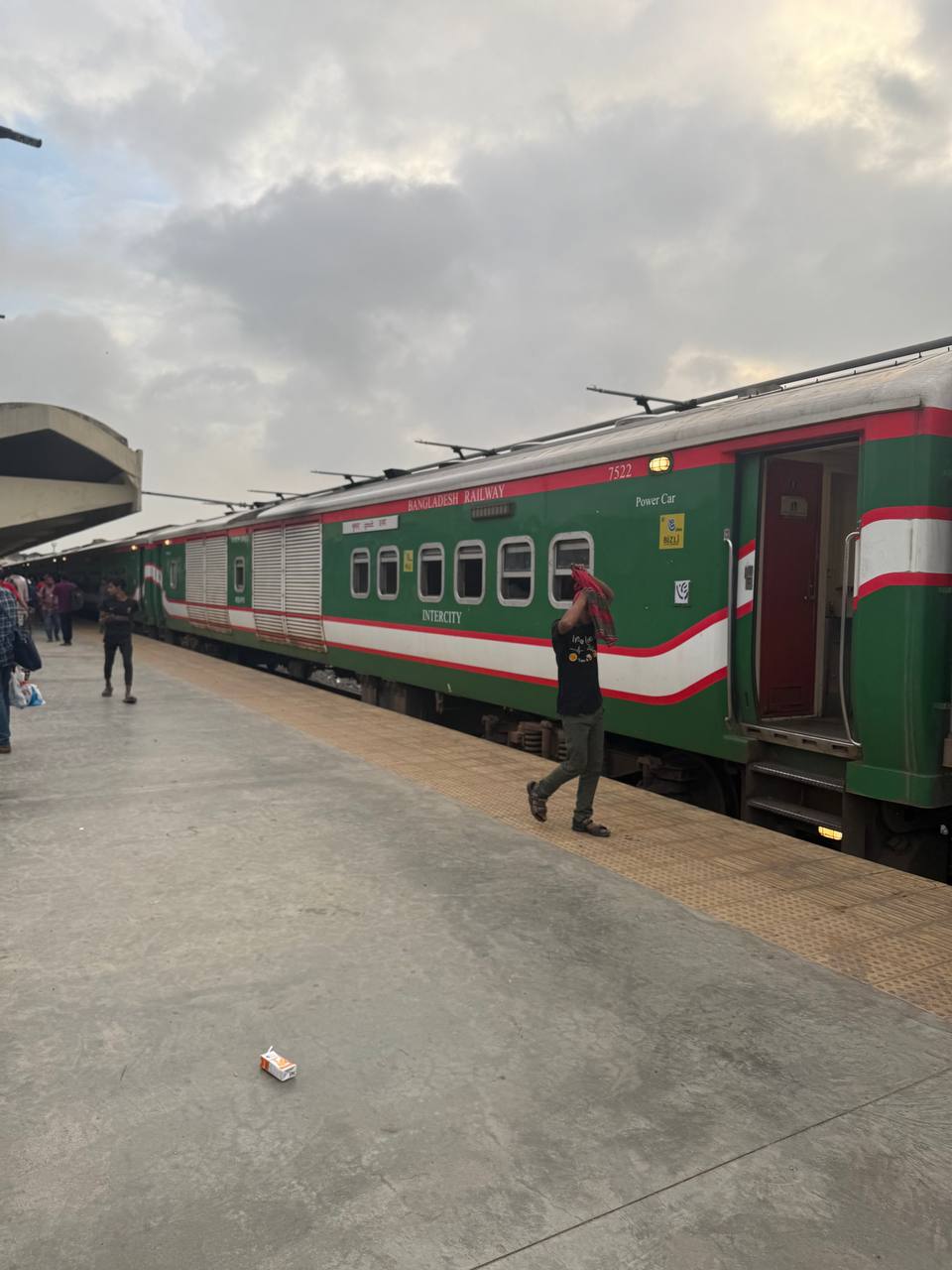While not nearly as famous, or indeed as big as what they have in India, taking the train in Bangladesh is one of the epic railway experiences you can do in Asia.
So, of course YPT integrate a train journey into our Bangladesh tours! Specifically from Kulna to Dhaka via the Sundarban Express. There are though of course many more journeys you can take and much more to taking the train in Bangladesh.
History of Trains in Bangladesh
Railways in Bangladesh go all the way back to the days of British India, with the first railway line opening in 1862 between Darshana and Jagati. Originally developed for transporting goods, especially tea and jute, the rail network quickly expanded across the Bengal region. By the time of partition in 1947, East Bengal had a fairly robust railway system in place, although it was later neglected under Pakistani rule.
After independence in 1971, Bangladesh inherited a dated but functional railway network. Since then, Bangladesh Railway has made slow but steady progress, modernising parts of the system and adding new lines. It remains state-owned and heavily subsidised, serving both as a vital part of domestic transport and a quirky cultural icon in its own right. Despite occasional delays and ageing infrastructure, the charm of the train lives on, and for many it remains the most memorable way to traverse the country.

Main Train Routes in Bangladesh
Most people know the Sundarban Express which runs from Khulna (খুলনা) to Dhaka (ঢাকা), and this is the route we take on our tour. It’s an overnight train, decent enough in quality, and ideal for watching the countryside slide by before arriving in the madness of the capital. There’s also the Parbat Express which runs from Dhaka (ঢাকা) to Sylhet (সিলেট), a hilly and tea-filled region close to the Indian border. The Chittagong Mail is another popular one that connects Dhaka (ঢাকা) with Chittagong (চট্টগ্রাম), the country’s main port city.
There are also some very long haul trains like the Drutajan Express between Dhaka (ঢাকা) and Dinajpur (দিনাজপুর), which is about as far north as you can go without falling into India. Each train has its quirks, its own set of delays and its own array of vendors who hop on at stations with everything from chai to deep-fried snacks. Schedules aren’t always the most reliable, but that’s part of the fun. Whether you’re in a seat, a sleeper or dangling from a doorframe, there’s a kind of chaotic poetry to it all.



What are the train classes in Bangladesh
There’s a full spread of classes depending on how much you’re willing to pay and how close you want to be to your fellow humans. The best is AC First Class Sleeper which is usually a 2 or 4 berth private compartment with lockable doors and decent bedding. Tickets here are around 1500–1800 BDT (13–16 USD) depending on the route and time of year.
Next down is AC Chair which is what it says on the tin, an air-conditioned seat and probably the most popular for daytime travel. These are around 800–1000 BDT (7–9 USD). Then you’ve got First Class Chair and First Class Non-AC, which can be surprisingly okay on shorter journeys. Second Class and Shovon Class (General) are the cheapest, usually packed with people, chickens and shouting, and cost about 100–300 BDT (less than 1–3 USD).
Each has its charm. AC Sleeper is obviously the most comfortable but there’s a raw, noisy, fun chaos to the lower classes if you can hack the pace.


Can you travel on the roof of the train?
The short answer is yes, although it’s officially illegal and technically dangerous. That said, it’s still a very real part of train culture in Bangladesh. Especially during big festivals like Eid, when people are desperate to get home, the roofs of trains become packed with passengers. Some people sit, some lie down, some somehow manage to walk along the carriages mid-motion to sell snacks or find a spot with slightly more breeze.
It’s not advised for foreigners to ride the roof unless you really know what you’re doing, but it remains one of the most iconic and shocking visuals of Bangladesh’s train system. Photos of jam-packed trains with people clinging to the top and sides often go viral for a reason. It’s not just transport, it’s survival.
So, what is it like taking the train in Bangladesh?
Personally I love traveling by train in Asia, particularly overnight and better still if it is by an old school slightly slow train. And by this metric Bangladesh delivers in leaps and bounds, even if our journey from Kulna was only around 9 hours.
We took the best rooms as in 2 and 4 berth cabins with lockable doors (something important in Bangladesh). The restaurant car is largely simpler than you get in say Vietnam or China, but it does a job, as does the multitude of hawkers available at pretty much every station. So, yeah taking the train in Bangladesh is pretty cool and indeed something we hope to add to more Bangladeshi Tours.





